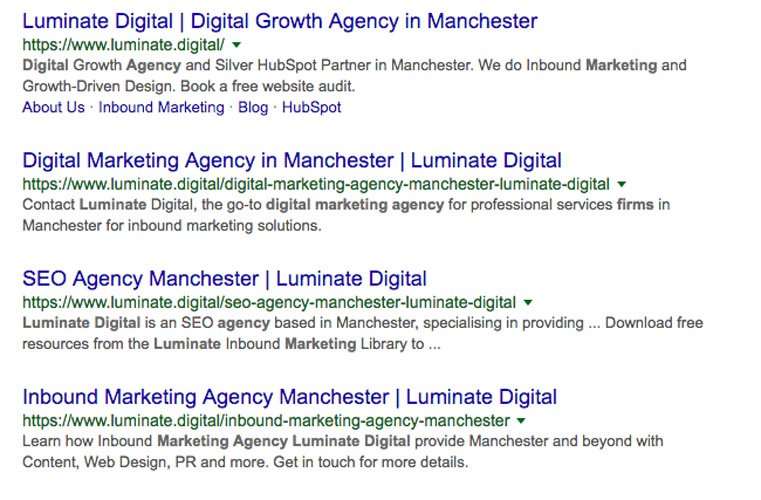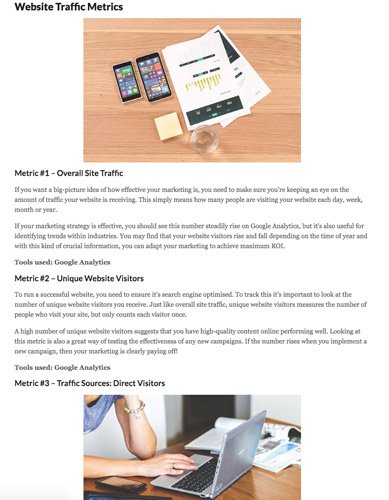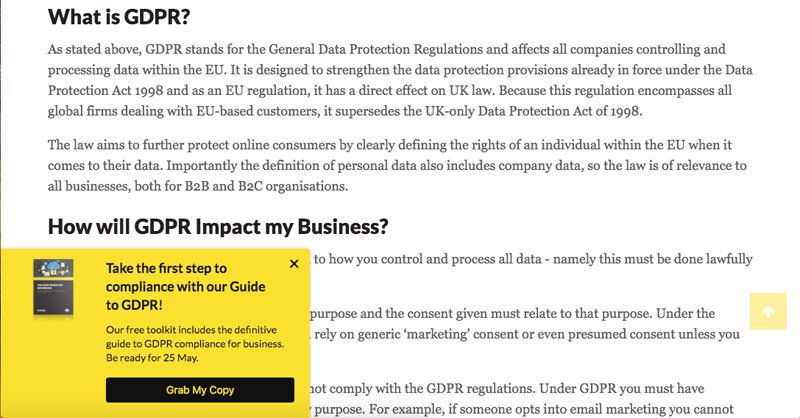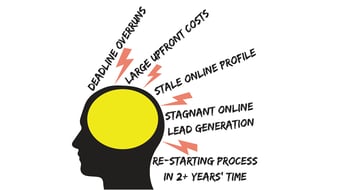What if I told you I could increase your dwell time and slash your bounce rate with a few simple industry tricks?
Every marketer knows how important both those elements are in determining how high your site ranks in Google’s search engine results page (SERP). Luckily for you, we’ve compiled 15 of the best ways to reduce your bounce rate and increase your dwell time so you can get your site to the very top of Google.
It’s frustrating, we know, to publish a high-quality blog post and find out that visitors aren’t staying long enough to read it.
The problem is that most people will spend a lot of time researching and writing their content, but won’t spend as long looking at how they can optimise their blog to grab their reader’s attention and keep them on the page.
But it’s alright, because following our 15 techniques, you can hook your readers in, keep them on your page till the very last line and please Google all in one go.
So without further ado...
Why Google Analytics is Important for Reducing Bounce Rate

Google Analytics is an incredibly useful tool for monitoring and optimising your site to continually increase the traffic you receive. Not only can you monitor and measure bounce rate and dwell time, but you can also look at sources of traffic, conversion rates, audience demographics and so much more.
To see what other metrics Google Analytics tracks which you can use to measure your marketing effectiveness, check out our blog post that goes more in-depth on the topic.
When ranking your blog on its SERP, Google RankBrain takes into account your bounce rate and dwell time. If it sees that visitors are clicking onto your site and staying for a while, it knows that your content is valuable. If you have a higher dwell time than your competition, you’ll quickly find yourself moving up the Google rankings.
The average dwell time for the top 10 Google rankings is 3 minutes and 10 seconds, which means that you need to get your reader seriously invested in your content for your blog to rank higher.
So, following our 15 tips, you’ll quickly see your bounce rate go down in Google Analytics, your dwell time increase, and your blog shoot up that SERP.
Firstly...
1. Pull Them In

A great introduction is the difference between an 80% bounce rate and a 30% bounce rate.
Think about it: your reader has just clicked into your blog, and the first thing they’re faced with is your introduction. Attention spans are short these days - people have a wide variety of content available to them, so if your introduction isn’t immediately engaging, why shouldn’t they click back and find a more compelling blog?
Spending quality time writing an engaging introduction will immediately pull readers into your content, and ensuring the rest of your blog is high-quality means that they'll stay to read it. This increases the dwell time on your page and decreases bounce rate.
2. Craft Compelling Subheadings

Subheadings are important. Really important.
As you can see from the diagram above from the Nielsen Norman Group, people will read your blog post in an ‘F pattern’. First, they’ll read your title, then the first few lines of your introduction, then they’ll scan the left side of your page for subheadings.
In fact, 70% of viewing time is spent on the left side of the page, and only 30% is spent on the right.
After you’ve written your post, review all your content and treat your subheadings as if they’re a collection of mini blog posts. The best tip is to edit your subheadings so that they include curiosity, surprise, personality and/or emotion.
Spending just a little time tweaking your subheadings and making use of one of these elements will intrigue your readers and pull them further down the page. This makes them less likely to click out of your blog straightaway, and more likely to spend a good few minutes invested in your content.
3. Pick The Right Keyword

Remember how people search on Google: they use phrases.
So if someone wanted to find out how to increase organic traffic, they could search ‘how to increase organic traffic’, ‘increase visitors to my site’, ‘how to attract more visitors to my website’ and so on.
Remember that inbound is all about catering to your audience’s buying habits. You should aim to pick keywords that your selected audience will be searching for and tailor your blogs around those keywords. This means that when someone does, say, want to increase their organic traffic and searches ‘increase visitors to my site’, when they find your blog centred around that exact keyword, they’ll click it immediately.
Writing around these keywords will increase your dwell time and decrease your bounce rate immensely, as you’ll be providing your audience with exactly what they’re looking for which ensures that they’ll stay to read your answers.
A key tip is to pick keywords with search results less than 500,000. Compared to queries with millions of search results, you’ll have much less competition to rank among, which increases the likelihood of ranking highly on Google and receiving more organic traffic as a result.
The #SEO success pyramid: patience, keyword research, #design, #contentmarketing, links, #analytics, #socialmedia... #SearchEngineOptimization pic.twitter.com/xBYVhpYvah
— Growth Hackers 🚀 (@StartGrowthHack) May 22, 2018
4. Target Quality Content for Quality Traffic

Another easy way to reduce bounce rate is to be selective in your keyword choice, and stop targeting keywords that send you low-value traffic.
Here, it’s extremely useful to check the volume of searches per month and pick keywords with at least 50 searches a month. This way you can be assured that people are searching for your keyword when you rank for it.
It’s also essential that you pick keywords and write content relevant to your industry. If you run a law firm but write a blog post about furniture chairs, then, even if visitors come to your blog, they’re likely to bounce the moment they see that your brand doesn’t align with your content. Using long-tail keywords that are more reflective of your product or service is a good way to ensure you benefit from the right traffic.
Target high-quality keywords, create relevant content, and that bounce rate will go right down!
5. Match the Title Tag and Meta Description with Searcher Intent

When you’ve picked your keyword, finished writing your blog post and are ready to publish, make sure to include your exact keyword in your title tag and meta description.
So, for example, if your keyword is ‘increase organic traffic’ then your title tag and meta description could look like this:
19 Amazing Tactics to Increase Organic Traffic
Here are 19 of our amazing tactics you can use to increase organic traffic and maximise your ROI...
Including your exact keyword in your title tag and meta description ensures that your blog matches exactly with searcher intent. Then, when a prospect searches for ‘increase organic traffic’ in Google and your site pops up in the SERP, they’ll immediately click through and read your content as you’ll have the answers to exactly what they were looking for.
They won’t exit until they’ve read all your content, increasing your dwell time and decreasing your bounce rate.
6. Internal Linking

Once visitors have read your page, linking them to more blogs will allow them to find other valuable content and stay on your website longer.
Dwell time measures the time between a visitor coming to your site and exiting. Including internal links within your content increases the chance that users will stay on your site once they’ve finished reading your initial blog, increasing their dwell time.
Internal linking also helps decrease bounce rate, as they heighten user interest and guide them to more relevant content on your site.
It takes only a little time to input several internal links within your content. If you touch on a subject and have a blog post that goes more in depth, then link the reader to that blog! You can also input a ‘related content’ widget with a list of more blog posts at the end of your piece.
A couple of internal links will make all the difference in reducing bounce rate and increasing dwell time.
7. Break Up Your Content

There’s nothing worse than clicking into a site and being faced with a huge, unreadable block of text.
At least that’s what your visitors think.
Spending a little bit of time formatting your content for readability will make all the difference to the user experience. Using shorter sentences and creating paragraphs which only have 1-3 lines will ensure that your content is skimmable and reader-friendly.
Making your content easy to read will lead visitors to do exactly that: read! This will lead to an increase in dwell time, and Google Rankbrain will happily bump your blog post right to the top of its rankings.
8. Copy Readability

Writing in simple language to increase your copy readability can help increase dwell time. Remember, readers are looking for information that’s easily digestible and enjoyable, so your content shouldn’t read like a university dissertation.
If visitors can easily read your content then they’re more likely to spend longer on your blog, and are highly likely to go to other pages on your site too.
You can use free online tools like readability-score.com that’ll show you your copy’s readability. You can check your scores according to the table below:

The higher the score, the more readable your copy, making it more likely that visitors will stay on your page to read it.
9. Use a Range of Mediums

Photos, tweets, infographics and videos are just a few things you can put into your content to increase engagement with your users.
Readers can be put off by large blocks of text with no visuals to boot. A good combination of text and photos, along with a tweet or a video optimises your content for readability so readers can stay invested on your site.
Additionally, embedding a video into your content is an easy way of keeping visitors on your page for a few minutes as they play the video. Keeping your visitors on your page for five minutes will greatly increase your dwell time, decrease your bounce rate and please Google Rankbrain all in one go.
10. Keep it Fresh

No one wants to read an article that’s five years old.
People want fresh and up to date information! Taking the time to update old blog posts with new information shows visitors that the content they’re reading is relevant, which will greatly reduce your bounce rate. It’s also good to display your ‘updated on’ date so visitors know you’ve spent time improving your site. If readers see that your content is dated ‘2013’, they’ll disregard it and click away.
Google also takes into account content freshness when ranking your blog, so keeping your content up to date will also ensure your content is optimised.
Repurposing your old blog posts is also a great way of using existing content to rank on Google. It only takes a little bit of time, but adding a few tweaks to old content and republishing it can get your old blog posts ranking, and organic site traffic up.
11. Use Pop-Ups Sparingly

A well-timed pop up can increase conversions on your site, but you should be careful not to use too many.
If a visitor clicks into your blog and is immediately faced with four pop-ups, they’re highly likely to click right back to Google and choose another site.
But that’s not to say you can’t use any! Including one or two can be very beneficial. Setting a timer so pop-ups don’t immediately hit your visitor after they land on your site is also a good way of making sure they’re not instantly overwhelmed. You can also program pop-ups to activate when visitors have scrolled to the bottom of your content, which increases the likelihood they’ll subscribe to a newsletter, as they’ve clearly spent time reading your blog.
This is a great way of making your pop-ups less intrusive and will keep your bounce rate down while also capturing those precious signups.
12. Looks Do Matter

Your website design matters.
A Google study found that internet users judge website design within 1/50th to 1/20th of a second. The study also determined that visually complex websites aren’t as appealing as websites with a simple design.
Nice, simple colours and lots of white space are two factors that’ll greatly heighten your website aesthetic. The simpler the web design and the more attractive your content looks, the less likely your user will hit that back button, spending more time on your site.
Remember: simple is best. So, think about your website design wisely!
13. Use Contrasting Colours

This comes back to website design. Good, simple, contrasting colours will make all the difference to your site aesthetic.
Don’t be afraid to come up with different colour combinations you can use! Black text on a white background is classic, but there are many others out there that’ll make your site pop.
You can also use colour contrast to draw your visitors’ attention to certain parts of your page, such as a sign up to a newsletter or a list of related blogs.
Once you’ve determined which colour combinations you’d like to use, A/B test them to find out which ones are the best at decreasing bounce rate and increasing dwell time.
14. Optimise Page Loading Time

The speed of your site is so important when determining bounce rate.
If your site is slow and your visitor has to wait over ten seconds for it to load, they’re highly likely to get tired of waiting and go elsewhere.
In fact, according to a study, 47% of consumers expect a web page to load in 2 seconds or less, and 40% of people abandon a web page that takes more than 3 seconds to load!
A slow site is therefore very likely to have a high bounce rate as well. So, spend some quality time increasing the speed of your site, and that bounce rate will go right down.
15. Optimise for Mobile

52.2% of all website traffic worldwide is generated through mobile phones.
Making sure your site is optimised for mobile devices will please your visitors and ensure that they’re not hitting back when your blog glitches on their phone.
There are a variety of online tools you can use to check your site is mobile friendly.
Screenfly will help you preview your pages in different resolutions to mimic the different mobile and desktop displays. You can also run your site through Google’s Mobile-Friendly Test to see if your site is optimised for mobile.
A mobile optimised site is one that greatly decreases bounce rate on mobile devices, and makes your users happy and ready to read on!
"How to Increase Sales by Encouraging Mobile Spending" | https://t.co/zQG85vuONa |#Data #Analytics #Inbound #Inboundmarketing #Blog #Digital #Contentmarketing #CMO #Net #SEO #SEM #Digitalmarketing #Websolutions #SMM pic.twitter.com/y4lxgSL6v4
— Jorge Petrucci (@PetrucciJorge) May 26, 2018
Bounce rate and dwell time are important elements for ranking on the SERP, but there are so many more components needed to create a solid SEO strategy such as backlink building and long-tail keyword research.
We understand that creating high-quality content, and keeping track of all these different elements, can be time-consuming. If you need any help running your blog, or want some general advice on your site, then get in touch with one of our marketing experts today to see how we could help you with your content marketing needs.




